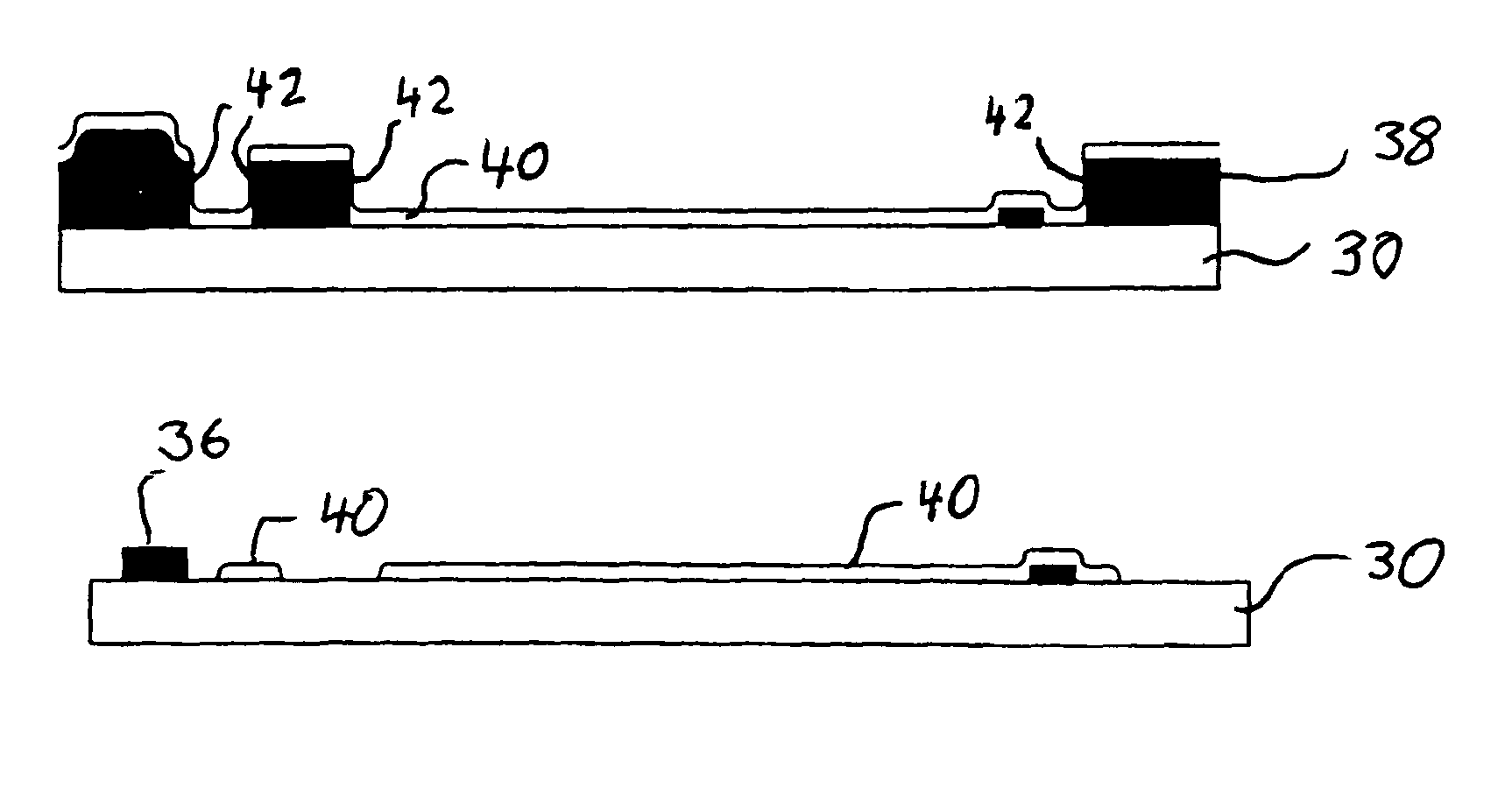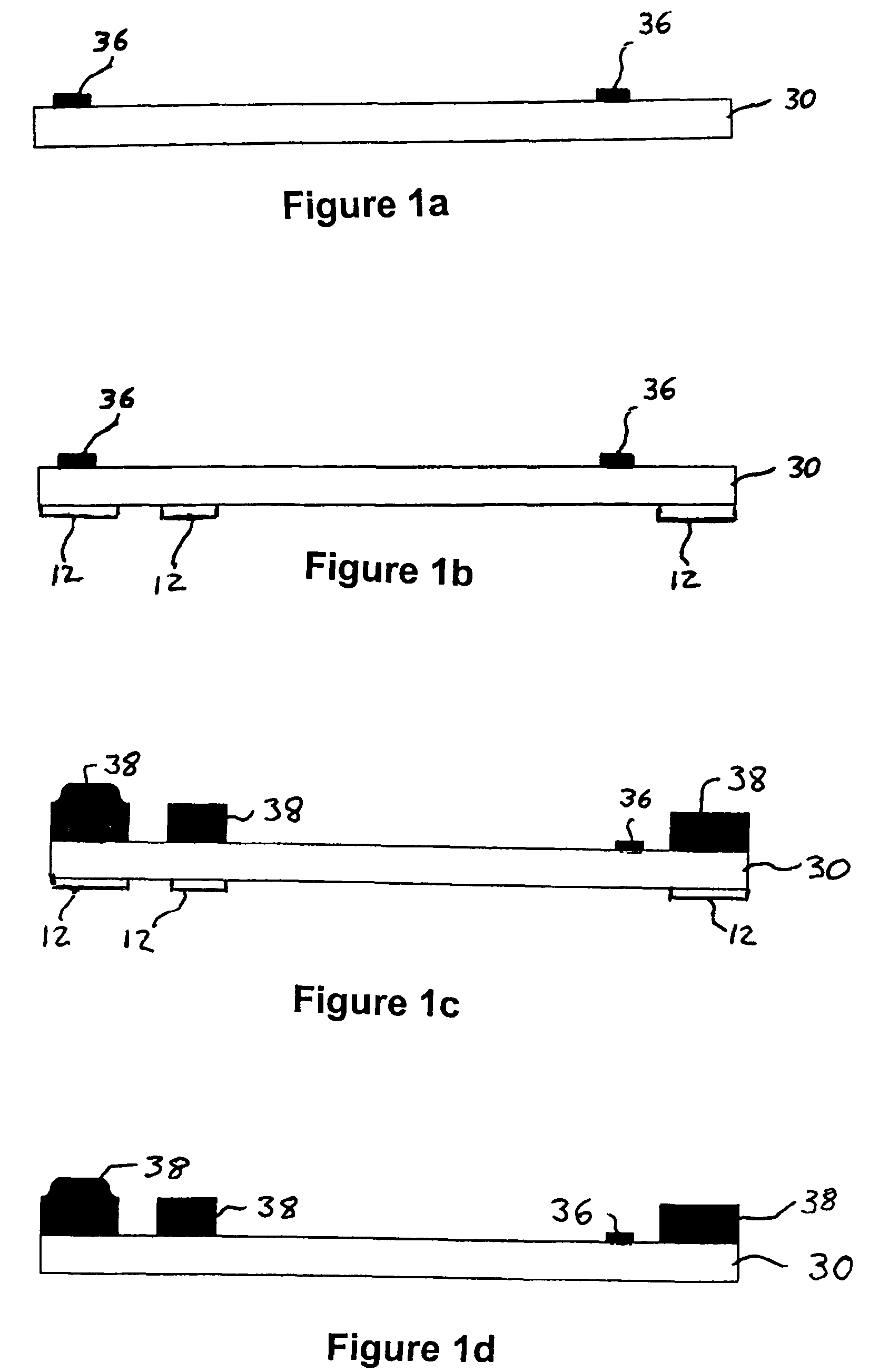Multilayer circuit devices and manufacturing methods using electroplated sacrificial structures
a technology of electroplating and circuit devices, applied in the direction of printed capacitor incorporation, printed element electric connection formation, semiconductor/solid-state device details, etc., can solve the problems of difficult to form precise patterns, present manufacturing difficulties, and inability or impracticality to form in layers, so as to facilitate the production of highly reliable substrates, reduce the effect of yield reduction due to misalignment and reduce the effect of significant or eliminated yield
- Summary
- Abstract
- Description
- Claims
- Application Information
AI Technical Summary
Benefits of technology
Problems solved by technology
Method used
Image
Examples
Embodiment Construction
[0027]Embodiments of the invention relate to multilayer electronic devices and methods for fabrication of multi-layer electronic devices. Particular embodiments of the invention relate to highly stable multilayer electronic devices and methods of fabrication thereof, for use in caustic or sensitive environments, such as medical and implant environments. In such embodiments, the material used for a patterned dielectric or other patterned materials in the multilayer electronic device are selected, in part, for suitable environmental compatibility.
[0028]However, as described above, materials that are selected based on environmental compatability may not be the materials best suited for being formed into the precise patterns that may be required for an electronic circuit design, using traditional manufacturing processes. Accordingly, embodiments of the present invention employ improved techniques for forming sacrifical structures that are removed during fabrication, to leave a pattern (...
PUM
 Login to View More
Login to View More Abstract
Description
Claims
Application Information
 Login to View More
Login to View More - R&D
- Intellectual Property
- Life Sciences
- Materials
- Tech Scout
- Unparalleled Data Quality
- Higher Quality Content
- 60% Fewer Hallucinations
Browse by: Latest US Patents, China's latest patents, Technical Efficacy Thesaurus, Application Domain, Technology Topic, Popular Technical Reports.
© 2025 PatSnap. All rights reserved.Legal|Privacy policy|Modern Slavery Act Transparency Statement|Sitemap|About US| Contact US: help@patsnap.com



